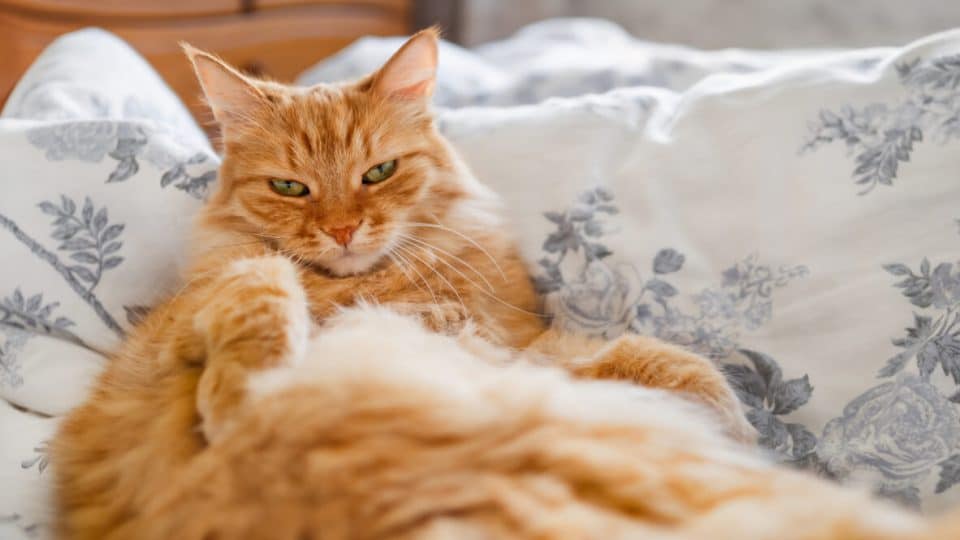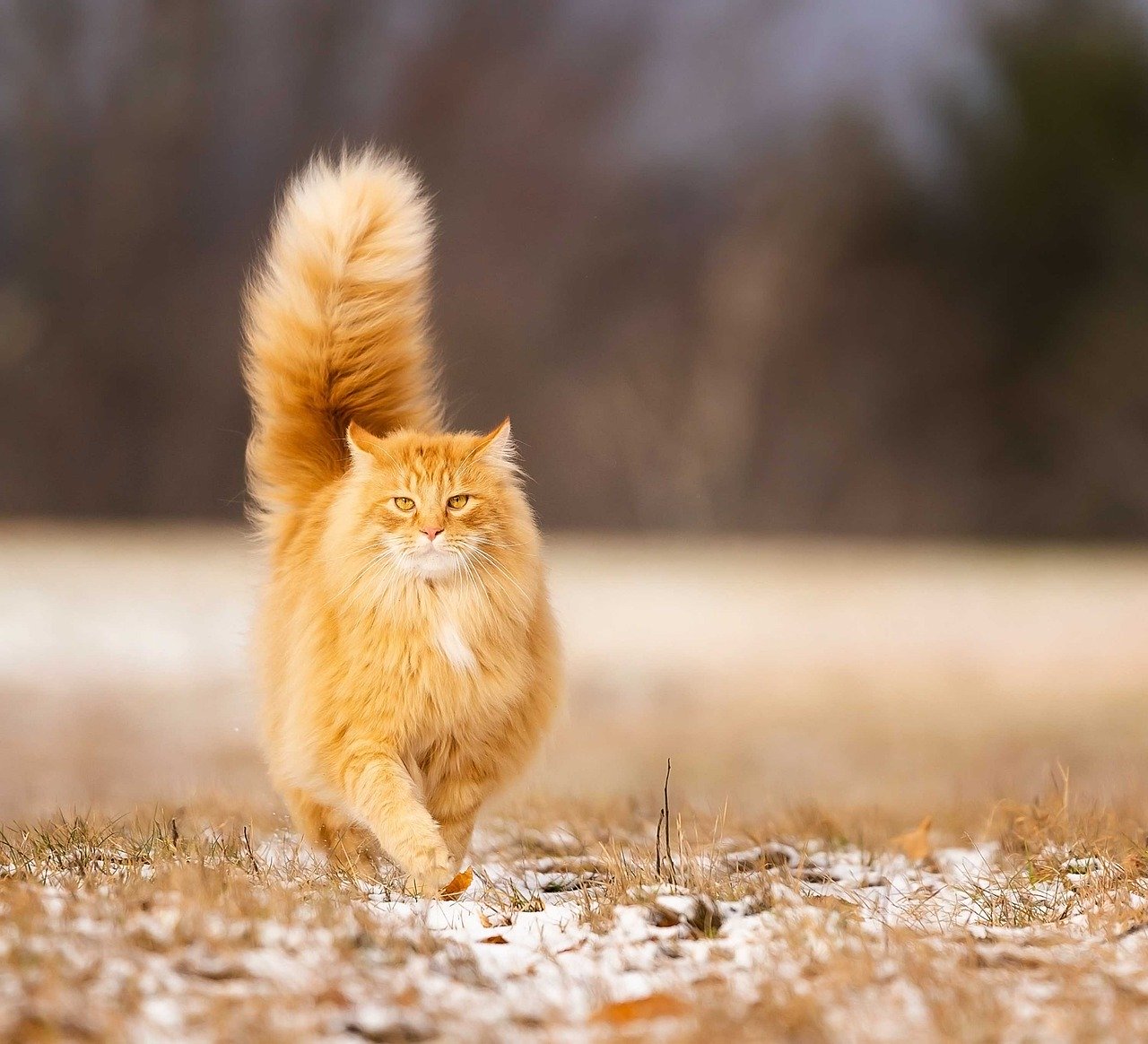- Not a substitute for professional veterinary help.
There’s just something that makes orange cats special. Maybe it’s their bright fur or mischievous spirit, but these fiery felines have definitely earned a reputation for being extra lovable.
“In my experience, orange cats can often seem more friendly and playful than some others, and many cat lovers and professionals have noticed this. However, this perception is largely anecdotal,” says Amanda Campion, Clinical Feline Behaviorist and owner of Kittysitty.
Read on to learn more about orange cats, including where they get their ginger coats and the most common orange cat breeds.
Do All Orange Cats Have a Friendly Personality?
Many cat lovers swear that orange cats are extra outgoing, friendly, and full of personality, and some research supports this perception.
In fact, according to one study, participants were more likely to describe orange cats as friendly. However, experts caution that these findings are based on human perception rather than objective differences in cat behavior.
“The personality of orange cats is just as varied as the domestic cat as a whole. I’ve met many ginger cats, and although some of them have been a bit ‘spicy’, others have been very friendly and affectionate,” says Sally Chamberlain, Clinical Animal Behaviorist.
Campion agrees, noting that the perception of orange cats being extra friendly mostly comes from anecdotal reports, not scientific studies.
Early socialization, individual temperament, and environment influences a cat’s personality more than coat colour,” Campion explains. “That said, their bold and outgoing behavior might make them stand out more, reinforcing the ‘friendly orange cat’ stereotype.”
Most Orange Cats Are Tabby Cats
Tabby refers to a cat coat pattern with distinctive markings, including an “M” shape on the forehead and patterns like stripes, spots, or swirls across the bodies.
Tabby cat patterns come in four main types:
- Mackerel
- Classic (or blotched)
- Spotted
- Ticked
The tabby pattern is a natural genetic trait found in many domestic cats, regardless of their breed.
“Orange cats are almost always referred to as tabby cats because of how the orange color gene works,” Campion explains. “The gene responsible for orange fur (the O gene) also carries the tabby pattern, so genetically, all orange cats will show some form of striping or classic tabby markings—even if they’re faint.”
In other words, you’ll never see a solid orange cat with no tabby pattern at all.
13 Breeds with Orange Cat Genes
Orange tabby coloring can appear in many cat breeds. That said, certain breeds are more commonly associated with orange coats.
13 of these breeds include:
1. American Shorthair
The American Shorthair is a medium-sized, muscular cat known for its gentle and affectionate temperament. Their short, dense coat comes in various colors and patterns, including orange.
These cats tend to get along well with children and other pets, which makes them suitable family companions.
2. British Shorthair
The British Shorthair is a medium-to-large cat with a dense, plush coat and a distinctive round face. They’re known for their calm and easygoing temperaments. Many people describe these cats as affectionate but not overly demanding.
3. Maine Coon
The Maine Coon is one of the largest domesticated cat breeds. Their long, shaggy coats and tufted ears give them a rugged appearance. Despite their size, Maine Coons are gentle, friendly, and sociable, which has earned them the nickname “gentle giants.” These playful, vocal cats are one of the most popular cat breeds in the U.S.
4. Persian
The Persian breed is known for their long, luxurious coats and distinctive flat faces. They have a calm and affectionate demeanor and prefer a peaceful environment. Persians come in many colors and patterns, including orange tabby.
They have higher grooming needs than other breeds, and they’re prone to more health problems than other cats due to their brachycephalic facial structure.
5. Scottish Fold
Scottish Fold cats are known for their distinctive folded ears, round faces, and expressive eyes. This affectionate and sociable breed enjoys attention in just about any form. Their short, dense coats come in many different colors and patterns.
6. Munchkin
Munchkin cats are known for their very short legs, which are the result of a genetic mutation. These spirited cats enjoy plenty of playtime. They come in many different colors, and their grooming needs will depend on their coat type and length.
7. Manx
The Manx cat is a medium, stocky cat known for their short or absent tails. This affectionate, even-tempered, and playful breed will often follow their favorite people around the house and sometimes make a ruckus! Their thick coats can come in many colors, including orange tabby.
8. Cornish Rex
This small to medium breed has a slender build and a distinctive short, curly coat. They’re often described as sociable and affectionate and tend to bond closely with their pet parents. Their coats come in many colors, including orange tabby. While they have minimal grooming needs, they require plenty of attention.
9. American Bobtail
These medium to large cats have short, bobbed tails and sociable, affectionate personalities. Some will even walk on a leash or play fetch. These cats are highly intelligent and can be quite independent. They make great family pets and generally do well in households with dogs, too.
10. Siberian
This medium to large breed is both playful and deeply affectionate. They have sweet personalities and love to be with their people! Their dense fur helps them thrive in cooler climates, but it also means they require quite a bit of grooming.
11. Devon Rex
The Devon Rex is instantly recognizable, thanks to their oversized ears, large eyes, and uniquely wavy coat. These cats are extremely social with energetic and mischievous personalities. Their low-shedding, curly fur also makes grooming much easier.
12. Exotic Shorthair
The Exotic Shorthair has a plush, round appearance with a compact, muscular body. They belong to the Persian breed group. Unlike Persians, though, their dense, soft coats require only minimal maintenance. This makes them a good fit for households seeking a lower grooming commitment.
13. Egyptian Mau
The Egyptian Mau is a rare cat breed with a striking spotted coat that sometimes comes in orange. This medium breed has an athletic build and a loving, loyal personality. These cats often enjoy interactive activities with their families and may even follow their favorite people around the house!
Are Orange Cats Always Male?
“Genetically, most ginger cats are male,” Chamberlain explains.
Here’s why: The orange coloration comes from the O gene, and this gene is located on the X sex chromosome.
A female cat would need to inherit two X chromosomes with the O gene located on them. A male cat only needs to inherit one X chromosome with the O gene.
This genetic setup means that approximately 80% of orange cats are male.
If you do have a male cat, these tips can help keep them healthy:
- Have them neutered: Spaying and neutering doesn’t just prevent unwanted litters. It also helps prevent territorial marking and aggression. It can also reduce the risk of certain health problems, like enlarged prostate glands.
- Pay attention to diet and exercise: Male cats can be prone to weight gain after neutering. Making sure they eat a balanced diet and get plenty of playtime can help them maintain their ideal weight.
- Get regular vet exams: All cats need routine vet visits to monitor their overall health. Regular checkups can help your vet spot possible health concerns early on.
At the end of the day, your cat’s coat color might not have any major effect on their temperament, but it can certainly make them unforgettable!





